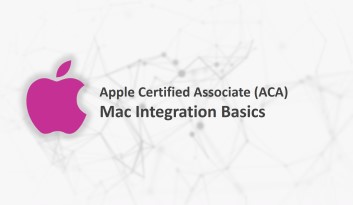Description
Overview
Cloud computing comes with many advantages than traditional forms of data storage, including but not limited to optimisation and protection of integral data and applications. CompTIA Cloud+ CV0-003 is perhaps the only certification that is performance-oriented with respect to the larger context of data systems processing. The CV0-003 certification is valid for cloud engineers irrespective of platforms and systems — feasible for professionals juggling across multiple cloud environments. This allows for the mitigation of any number of challenges that can be presented by various platforms.
The certification programme is also highly flexible and allows working professionals to progress with training at their own pace. Apart from that, the programme provides custom-created training content, and live online sessions with trainers. This methodology allows for every participant to prepare for the certification as per their own comfort, improving their overall chances of clearing the exam.
The CompTIA Cloud+ (CV0-003) takes the advantages from CV0-002 a step further by elaboratively covering the ability and skill of a cloud engineer that is required to operate the necessary systems as part of any cloud platform. Whether it is deployment, data security, or environment automation — each aspect of a candidate’s technical skill is tested and validated as part of the CV0-003 certification. CompTIA Cloud+ is also the only certification accepted for DoD 8570.01-M. It offers infrastructure options for professionals that require accreditation in IAM Level I, CSSP Analyst and CSSP Infrastructure Support roles.
The biggest advantage of the CompTIA Cloud+ (CV0-003) in comparison to Microsoft’s Azure and AWS’s certifications is independence from platforms and vendors. This allows professionals to cycle through various cloud architectures and platforms without having to worry about earning other certifications.
Combined with its advantages, global recognition and flexible training module, the CompTIA Cloud+ (CV0-003) certification should not be ignored and is the right choice for IT professionals looking to further their careers in cloud computing.
- 23:06:00 Hours
- 12 Months Access
- Presented by highly qualified, industry leading experts
Course Details
Objectives
- Cloud Specialist
- Cloud Engineer
- Cloud Developer
- System Administrator
- Systems Engineer
- Network Administrator
- Network Engineer
Audience
- Entry to mid-level cloud administrators.
- System and network engineers who wish to add cloud expertise to their skillset.
- IT professionals taking the first steps towards specialization in cloud technologies.
Prerequisites
- Before starting your journey to become CompTIA Cloud+ certified, we recommend that you meet the following prerequisites:
Prior to starting Cloud+ exam preparation:
- CompTIA A+ and CompTIA Network+ certified.
- CompTIA Security+ certification recommended.
- Strong experience in system administration and networking.
Prior to taking the CompTIA Cloud+ exam:
- Completion our CompTIA Cloud+ training program
- 2-3 years system administration experience.
- At least 12 months of Cloud admin hands-on experience in the lab or field.
- Thorough understanding of all topics detailed in the exam objectives.
Course Outline
The CompTIA Cloud+ certification teaches you to think critically and from the perspective of an experienced cloud user. Proving an individual’s ability to understand the configuration and deployment of cloud environments, systems, security, maintenance, and troubleshooting are all part of this certification.
Configuration and Deployment
- Given a scenario, analyze system requirements to ensure successful system deployment.
- Given a scenario, execute a provided deployment plan.
- Given a scenario, analyze system requirements to determine if a given testing plan is appropriate.
- Given a scenario, analyze testing results to determine if the testing was successful in relation to given system requirements.
- Given a scenario, analyze sizing, subnetting, and basic routing for a provided deployment of the virtual network.
- Given a scenario, analyze CPU and memory sizing for a provided deployment.
- Given a scenario, analyze the appropriate storage type and protection capability for a provided deployment.
- Given a scenario, analyze characteristics of the workload (storage, network, compute) to ensure a successful migration.
- Given a scenario, apply elements required to extend the infrastructure into a given cloud solution.
Security
- Given a scenario, apply security configurations and compliance controls to meet given cloud infrastructure requirements.
- Given a scenario, apply the appropriate ACL to the target objects to meet access requirements according to a security template.
- Given a cloud service model, implement defined security technologies to meet given security requirements.
- Given a cloud service model, apply the appropriate security automation technique to the target system.
Maintenance
- Given a cloud service model, determine the appropriate methodology to apply given patches.
- Given a scenario, apply the appropriate automation tools to update cloud elements.
- Given a scenario, apply an appropriate backup or restore method.
- Given a cloud-based scenario, apply appropriate disaster recovery methods.
- Given a cloud-based scenario, apply the appropriate steps to ensure business continuity.
- Given a scenario, apply the appropriate maintenance automation technique to the target objects.
Management
- Given a scenario, analyse defined metrics to determine the presence of an abnormality and/or forecast future needed cloud resources.
- Given a scenario, determine the appropriate allocation of cloud resources.
- Given a scenario, determine when to provision/deprovision cloud resources.
- Given a scenario, implement account provisioning techniques in a cloud environment to meet security and policy requirements.
- Given a scenario, analyze deployment results to confirm they meet the baseline.
- Given a specific environment and related data (e.g., performance, capacity, trends), apply appropriate changes to meet expected criteria.
- Given SLA requirements, determine the appropriate metrics to report.
Troubleshooting
- Given a scenario, troubleshoot a deployment issue.
- Given a scenario, troubleshoot common capacity issues.
- Given a scenario, troubleshoot automation/orchestration issues.
- Given a scenario, troubleshoot connectivity issues.
- Given a scenario, troubleshoot security issues.
- Given a scenario, explain the troubleshooting methodology.
Top of Form
CLOUD ARCHITECTURE AND DESIGN
- Overview
- Define Cloud Computing
- Identify Cloud Deployment And Service Models
- Identify Emerging Cloud Technologies
- Explain Business Capacity Planning
- Explain Performance Capacity Planning
- Explain High Availability And Scaling For Cloud
- Explain The Use Of Regions And Availability Zones
- Explain Scaling And HA Of Cloud Resources
- Analyze Business Requirements Considerations
- Analyze Different Cloud Environment Solutions
- Analyze Testing Techniques For A Cloud Solution
CLOUD SECURITY
- Identify And Discuss IAM
- Identify And Discuss IAM Demo
- Identify And Configure Security Access Controls
- Security Access Controls Demo
- Analyze The IAM Solutions
- Explain Network Segmentation In Cloud Security
- Network Segmentation In Cloud Security Demo
- Explain Network Services In Cloud Security
- Network Services In Cloud Security Demo
- Choose The Protocol To Secure Cloud Traffic
- Protocols To Secure Cloud Traffic Demo
- Describe Hardening And Configuration Changes
- Hardening Cloud-Based Resources Demo
- Analyze The Security Solutions
- Identify Different Application Security Controls
- Identify Different OS Security Controls
- Analyze App And OS Security Controls Solutions
- Explain Data Security Controls In The Cloud
- Explain Compliance Controls In The Cloud
- Data And Compliance Controls Demo
- Analyze Data And Compliance Controls
- Security Requirements In The Cloud Demo
- Meet Security Requirements In The Cloud
- Analyze Security Requirement Solutions
- Review Incident Response Procedure
CLOUD DEPLOYMENT
- Identify Different Cloud Subscription Services
- Discuss Provisioning Storage Resources
- Provisioning Storage Resources Demo
- Deploy Virtual Machine Using Templates
- Deploy And Configure Containers
- Analyze Deploying Cloud Solutions
- Discuss Storage Type Provisioning
- Review Storage Tiers Considerations
- Storage Tiers Consideration Demo
- Describe Storage Protocols
- Review Different RAID Configurations
- Describe Storage Features And More
- Storage Features Demo
- Analyze Storage Provisioning In The Cloud
- Describe Deploying Networking Services
- Deploying Networking Services Demo
- Discuss Deploying Virtual Routing
- Deploying Virtual Routing Demo
- Discuss Deploying SR-IOV
- Analyze Deploying Cloud Network Solutions
- Describe Configuring Appropriate Compute Sizing
- Configuring Appropriate Compute Sizing Demo
- Analyze Appropriate Compute Sizing
- Discuss Performing Cloud Migrations
CLOUD OPERATIONS AND SUPPORT
- Discuss Centralized Logging For Cloud Ops
- Discuss Monitoring And Alerting For Cloud Ops
- Configuring To Maintain Operational Status Demo
- Describe Operational Management Concepts
- Discuss Patching And Upgrading As Maintenance
- Discuss Reporting And Dashboard For Maintenance
- Maintain Operation Of A Cloud Environment Demo
- Analyze Cloud Environment Optimization
- Discuss Automation And Orchestration Techniques
- Automation And Orchestration Demo
- Analyze Automation And Orchestration Techniques
- Review Backup And Restore Operations
- Backup And Restore Operations Demo
- Review Disaster Recovery Tasks
- Disaster Recovery Tasks Demo
CLOUD TROUBLESHOOTING
- Discuss Troubleshooting Method For The Cloud
- Troubleshoot Security Issues Scenario 1
- Troubleshoot Security Issues Scenario 2
- Troubleshoot Deployment Issues Scenario 1
- Troubleshoot Deployment Issues Scenario 2
- Troubleshoot Connectivity Issues Scenario 1
- Troubleshoot Connectivity Issues Scenario 2
- Troubleshoot Performance Issues Scenario 1
- Troubleshoot Automation And Orchestration Issues



